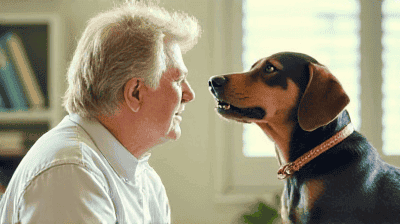Navigating the Adoption Process: A Step-by-Step Guide for First-Time Pet Owners

Adopting a pet is one of the most rewarding decisions you can make. Not only do you gain a loyal companion, but you also give an animal in need a second chance at life. However, the adoption process can feel overwhelming, especially for first-time pet owners. From choosing the right pet to understanding the responsibilities of pet ownership, there’s a lot to consider. This guide will walk you through the adoption process step by step, offering tips and advice to help you make informed decisions and ensure a smooth transition for both you and your new furry friend.
1. Why Adoption Is a Great Choice
Saving Lives
Millions of animals enter shelters every year, and many are euthanized due to overcrowding. By adopting, you’re giving an animal a chance at a loving home and freeing up space for other animals in need.
Cost-Effective
Adoption fees are typically lower than the cost of buying from a breeder or pet store. Many shelters also include initial vaccinations, spaying/neutering, and microchipping in the adoption fee.
Supporting Shelters
Your adoption fee helps shelters and rescue organizations continue their lifesaving work, including providing medical care, food, and shelter for animals in need.
Finding the Perfect Match
Shelters and rescues often have a variety of animals to choose from, including different breeds, ages, and personalities. Staff and volunteers can help match you with a pet that suits your lifestyle.
2. Preparing for Pet Ownership

Assess Your Lifestyle
Before adopting, consider your daily routine, living situation, and long-term plans. Ask yourself:
- Do I have enough time to care for a pet?
- Is my home suitable for a pet (e.g., space, yard, or pet-friendly policies)?
- Can I afford the ongoing costs of pet ownership, including food, vet care, and supplies?
Research Pet Types and Breeds
Different pets have different needs. Consider factors such as:
- Size and energy level: High-energy breeds like Border Collies require more exercise than low-energy breeds like Basset Hounds.
- Grooming needs: Long-haired breeds like Persian cats need regular grooming, while short-haired breeds require less maintenance.
- Compatibility with children or other pets: Some animals are more social or adaptable than others.
Budget for Pet Expenses
Pet ownership comes with financial responsibilities. Common costs include:
- Adoption fees
- Food and treats
- Veterinary care (routine checkups, vaccinations, and emergencies)
- Grooming and grooming supplies
- Toys, bedding, and other accessories
Pet-Proof Your Home
Prepare your home for your new pet by:
- Removing hazardous items (e.g., toxic plants, electrical cords, or small objects that could be swallowed)
- Creating a designated space for your pet, such as a crate, bed, or litter box
- Ensuring your home is secure to prevent escapes
3. Choosing the Right Adoption Organization
Animal Shelters
Animal shelters are often run by local governments or nonprofit organizations. They house a variety of animals and provide essential services like vaccinations and spaying/neutering.
Rescue Groups
Rescue groups are typically breed-specific or focus on certain types of animals. They often rely on foster homes to care for animals until they’re adopted.
Online Adoption Platforms
Websites like Petfinder and Adopt-a-Pet allow you to search for adoptable pets in your area. These platforms connect you with shelters and rescues nationwide.
Questions to Ask
When choosing an adoption organization, ask:
- What is the adoption process like?
- What is included in the adoption fee?
- Can I meet the pet before adopting?
- What support do you offer after adoption?
4. The Adoption Process: Step by Step

Step 1: Visit the Shelter or Rescue
Start by visiting shelters or rescues in your area. Spend time interacting with the animals to get a sense of their personalities. Bring family members along to ensure everyone is comfortable with the new pet.
Step 2: Complete an Application
Most shelters and rescues require you to fill out an adoption application. This helps them determine if you’re a good fit for the pet. Be honest and thorough in your responses.
Step 3: Meet and Greet
If your application is approved, you’ll have the opportunity to meet the pet in person. This is a chance to ask questions and observe the animal’s behavior.
Step 4: Home Visit (If Required)
Some organizations conduct home visits to ensure your home is safe and suitable for the pet. This is more common with rescues than shelters.
Step 5: Pay the Adoption Fee
Adoption fees vary depending on the organization and the pet. Fees typically cover vaccinations, spaying/neutering, and microchipping.
Step 6: Sign the Adoption Agreement
Before taking your new pet home, you’ll sign an adoption agreement. This legally binds you to care for the animal and comply with the organization’s policies.
Step 7: Bring Your Pet Home
The big day has arrived! Bring your new pet home and give them time to adjust to their new environment. Be patient as they settle in and get to know you.
5. Post-Adoption Tips
Establish a Routine
Pets thrive on routine. Set regular times for feeding, walks, and playtime to help your pet feel secure.
Schedule a Vet Visit
Even if your pet has already been vaccinated and spayed/neutered, schedule a vet visit within the first few weeks of adoption. This ensures your pet is healthy and allows you to address any concerns.
Socialize Your Pet
Introduce your pet to new people, animals, and environments gradually. Positive socialization helps prevent behavioral issues.
Provide Training
Basic obedience training is essential for building a strong bond with your pet and ensuring they’re well-behaved. Consider enrolling in a training class or working with a professional.
Be Patient
Adjusting to a new home can be stressful for pets. Be patient and give them time to acclimate. Offer plenty of love, reassurance, and positive reinforcement.
6. Common Challenges and How to Overcome Them

Separation Anxiety
Some pets struggle with being left alone. To ease separation anxiety:
- Gradually increase the time you spend apart.
- Provide toys and treats to keep your pet occupied.
- Consider crate training for dogs.
Litter Box Issues
If your cat is avoiding the litter box:
- Ensure the box is clean and accessible.
- Try different types of litter or litter boxes.
- Consult your vet to rule out medical issues.
Behavioral Problems
Pets may exhibit behavioral issues like chewing, barking, or scratching. Address these problems by:
- Providing appropriate outlets for their energy (e.g., toys, scratching posts).
- Using positive reinforcement to encourage good behavior.
- Seeking professional help if needed.
7. The Lifelong Benefits of Pet Adoption
Unconditional Love
Pets provide companionship and unconditional love, which can improve your mental and emotional well-being.
Increased Physical Activity
Dogs, in particular, encourage regular exercise through walks and playtime.
Social Connections
Pets can help you meet new people, whether at the dog park or through community events.
A Sense of Purpose
Caring for a pet gives you a sense of responsibility and fulfillment.
Conclusion
Adopting a pet is a life-changing experience that requires careful thought and preparation. By understanding the adoption process and being a responsible pet owner, you can ensure a happy and fulfilling life for your new companion. Remember, adopting a pet is a commitment that lasts for years, so take the time to make the right choice. With patience, love, and dedication, you and your pet can build a bond that brings joy and companionship for years to come.








